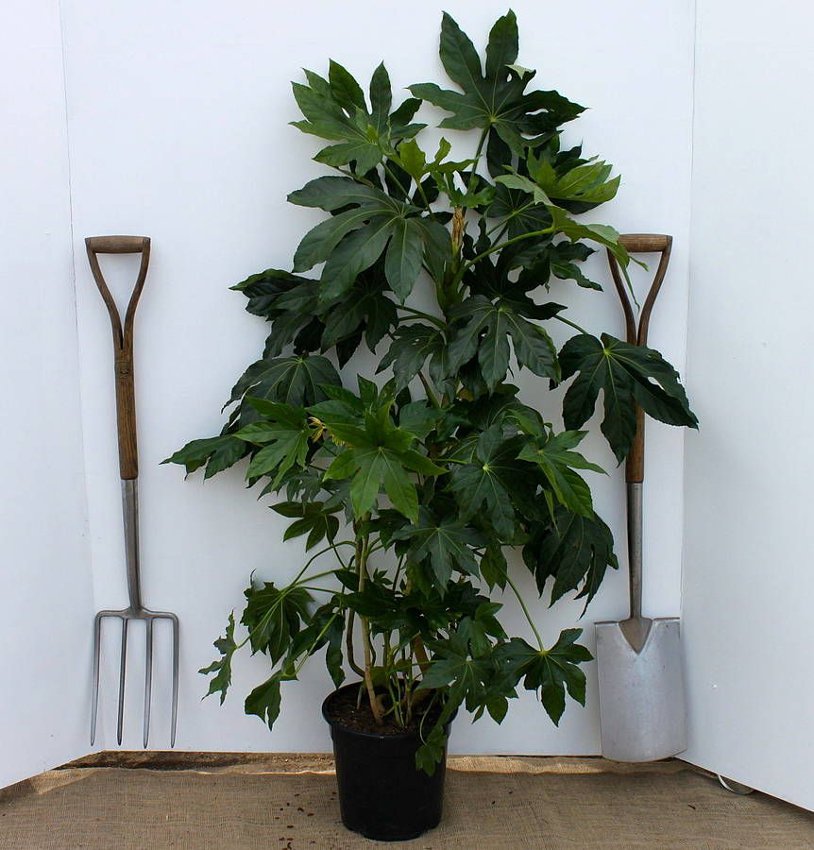
Houseplant Japanese Aralia Fatsia japonica 20 Seeds
Buy The Best Fatsia Japanese Aralia Plants For Sale Online With Free Shipping From Wilson Bros Gardens Questions? Contact Us ALWAYS FREE SHIPPING! Sign In | Create Account PLANTS & TREES PLANT FINDER SALE RARE PLANTS NEW ADVICE ABOUT WIN $25 eCARD GIFT CARDS 0

Fatsia japonica Japanese Aralia Seedling Jurassicplants Nurseries
The common names Japanese aralia plant and Japanese fatsia refer to the same broadleaf evergreen, known botanically as Aralia japonica or Fatsia japonica. The plant features huge, deeply lobed leaves that grow to about a foot (30cm.) in width atop long leaf stems that reach up and outward.

Fatsia japonica Japanese Aralia The Seed Vine
SKU #03564 8-11 Your climate might be too cold for this plant: Change Location Find In Store OVERVIEW DETAILS STYLE CARE This Plant's Growing Zones: 8-11 Your USDA Cold Hardiness Zone: Your climate may be too cold for this plant Change Location Be Inspired Chilled White With A Slice of Lime: Try this Color Combo with these Plants
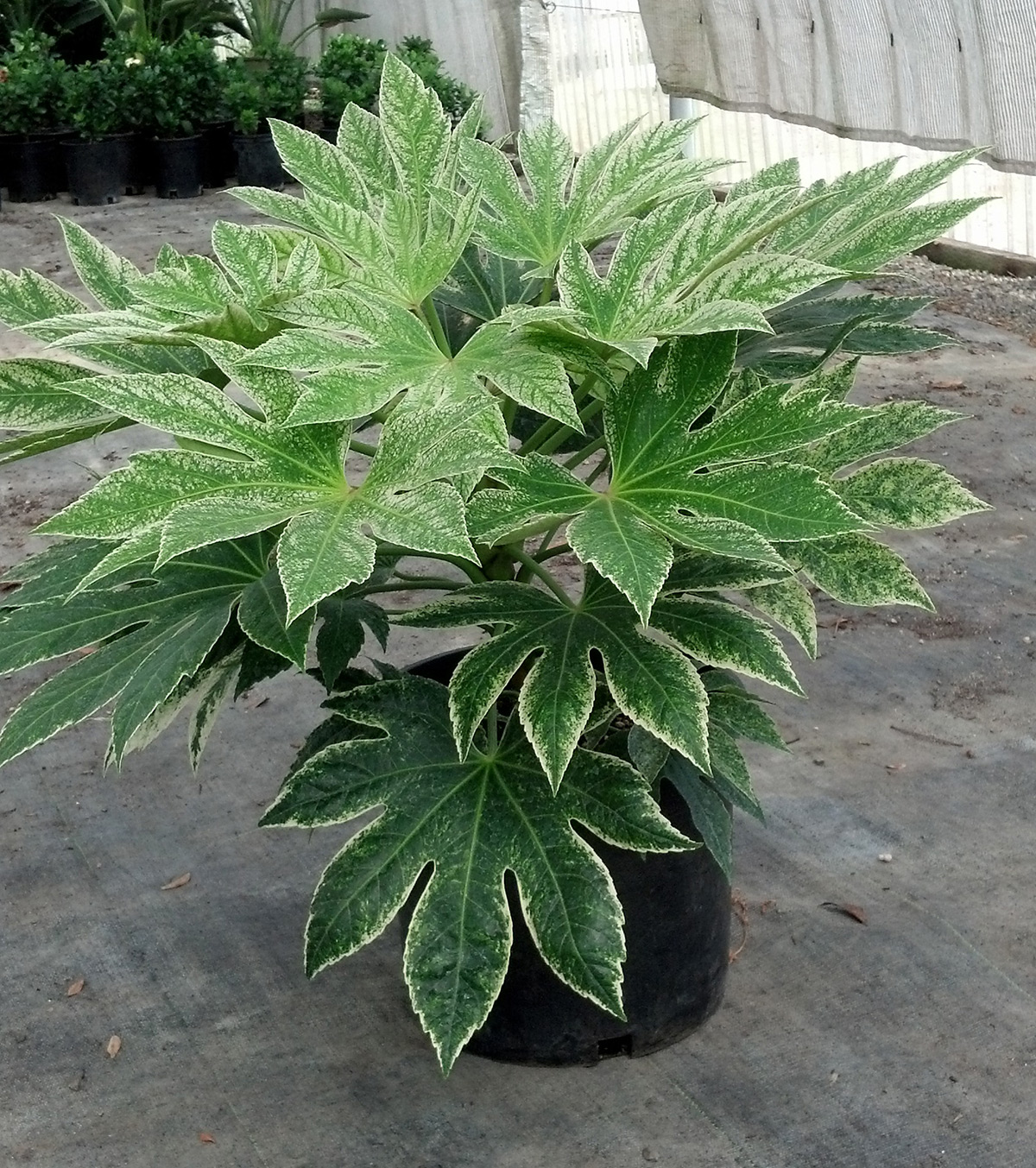
Variegated Japanese Aralia Fatsia 'Spiders Web' Plants4Home
The Japanese Aralia is a species of broad-leaved evergreen that is part of the Araliaceae family. Commonly referred to as the "Japanese Fatsia", its official botanical name is Fatsia Japonica which means glossy-leaf paper plant.
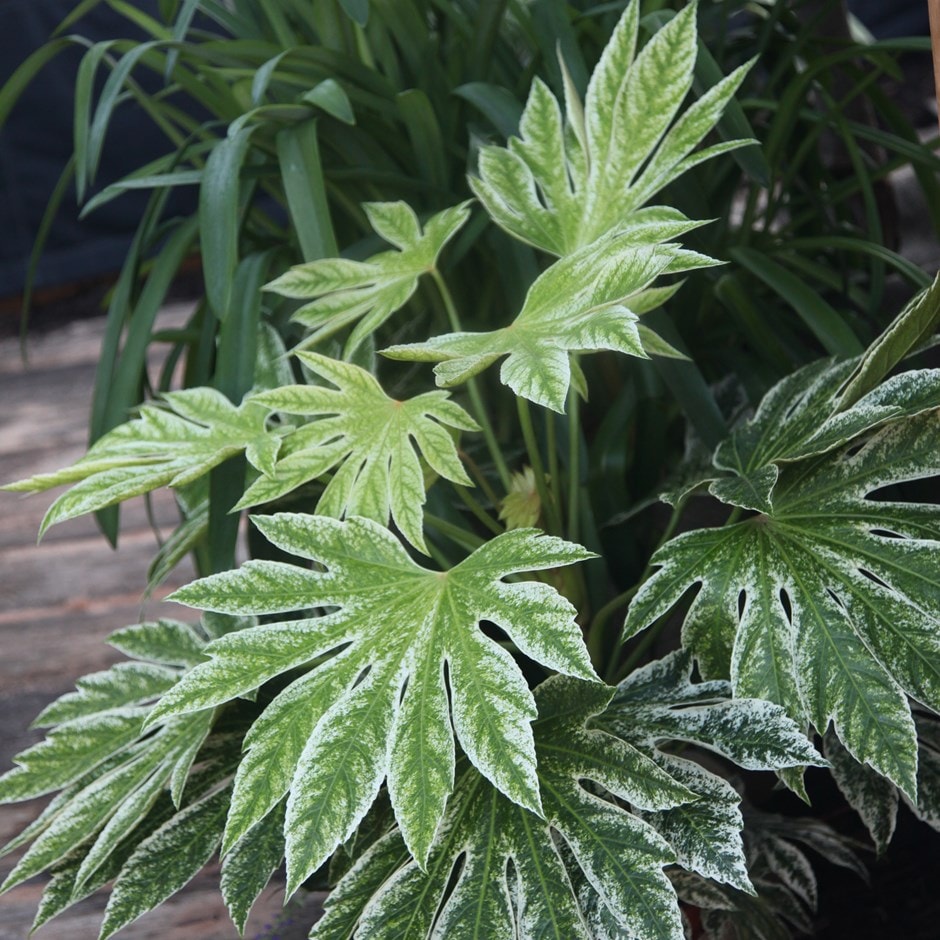
Buy Japanese aralia Fatsia japonica Spider's Web £19.99 Delivery by Crocus
Fatsia japonica. fatsia, ( Fatsia japonica ), evergreen shrub or small tree, in the ginseng family ( Araliaceae ), native to Japan but widely grown indoors for its striking foliage and easy care. In nature it can attain a height to 5 metres (16 feet); the glossy, dark-green leaves, roughly star-shaped, with 7 to 9 lobes, may be nearly 45.
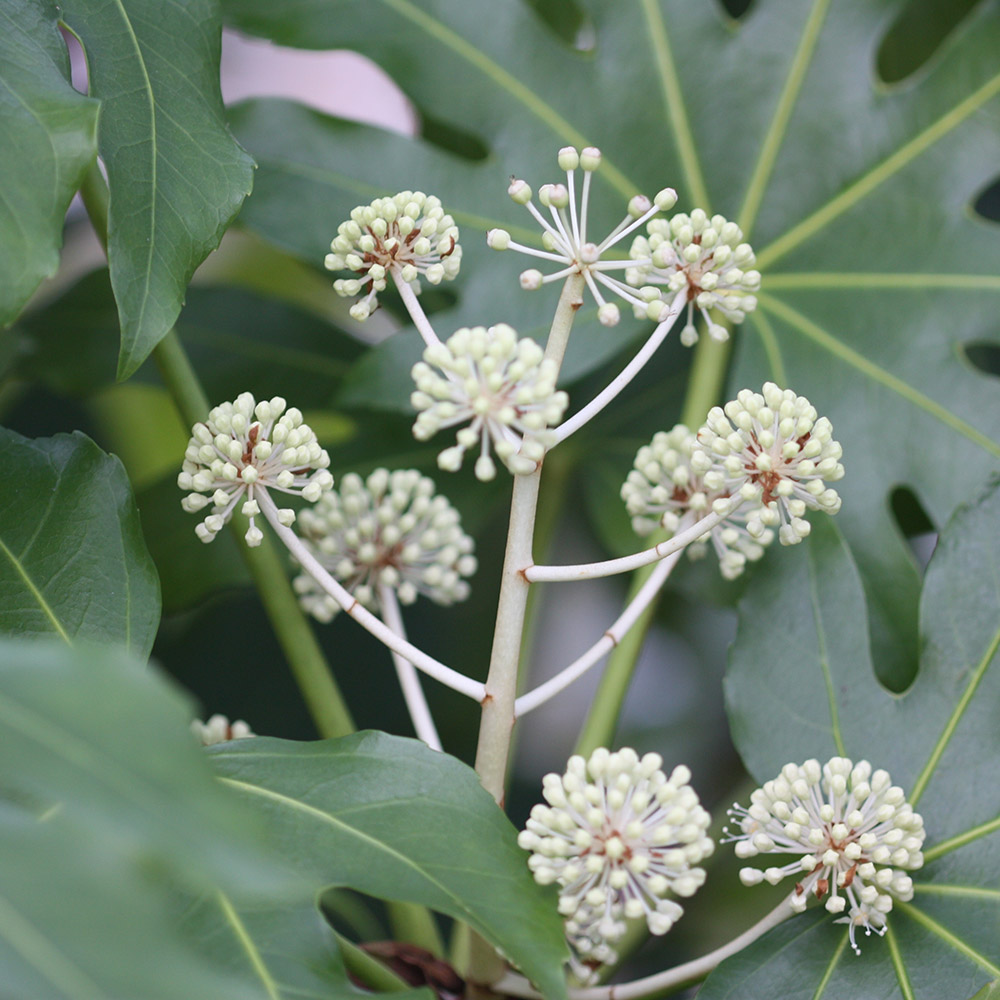
Buy Japanese aralia Fatsia japonica Delivery by Waitrose Garden in association with Crocus
Fatsia Japonica, also known as Japanese Fatsia, is a flowering plant species belonging to the Araliaceae family (Aralia plant) and is native to Japan, Taiwan, and South Korea.Fatsi, one of the plant's common names, comes from the Japanese word for eight and refers to the eight lobes of Japonica's palmate leaves.

Buy Japanese aralia Fatsia japonica Delivery by Waitrose Garden in association with Crocus
Japanese aralia or paper plant, Fatsia japonica, is a fantastic foliage plant, native to Japan. A medium sized shrub, Fatsia japonica bears glossy evergreen leaves and spherical, ivy-like flowers, followed by black berries. It's a great choice for a shady spot in the garden, and it can also be grown as a house plant.

FATSIA Japonica Japanese Aralia Seeds. Glossy green foliage. Suitable The Climbing Fig
Japanese aralia A medium-sized evergreen shrub of open, spreading habit, with palmately-lobed leaves to 45cm in width and small white flowers in globose clusters. Fruits small, black Other common names castor oil plant fatsi see more fig-leaf palm Synonyms Aralia sieboldii K. Koch Aralia sieboldii de Vriese see more Aralia japonica Join the RHS
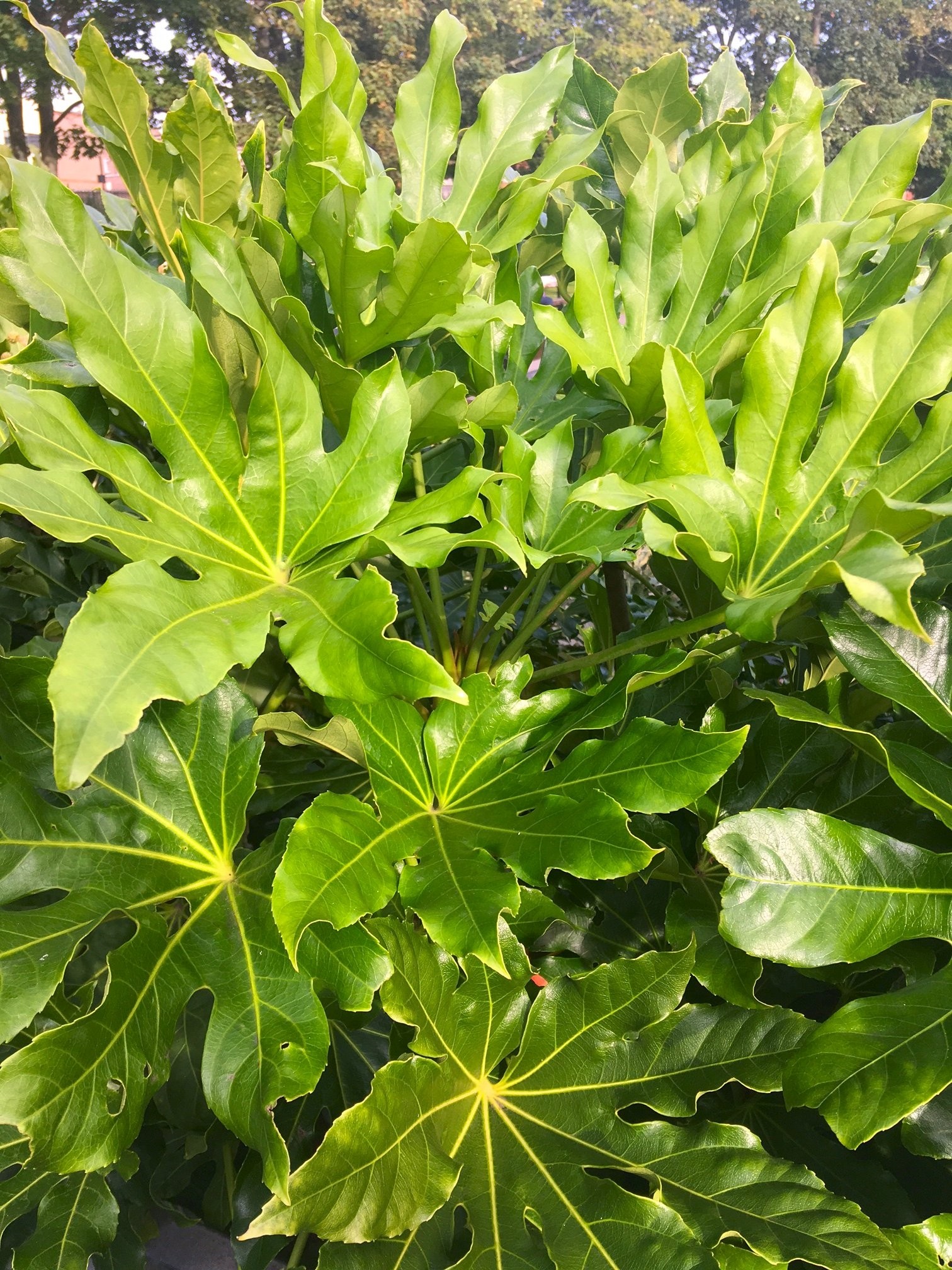
Fatsia Japonica Japanese Aralia Plants Jungle Garden Style Garden Plants
Japanese Aralia is a prized tropical shrub that features large glossy green leaves that will brighten up a shady Northwest garden. This is an evergreen shrub that can grow to 10' in both height and width. It produces large, deeply lobed (7-11 lobes), glossy green leaves up 16 inches wide. They are born on woody stems that all emerge from a clump.
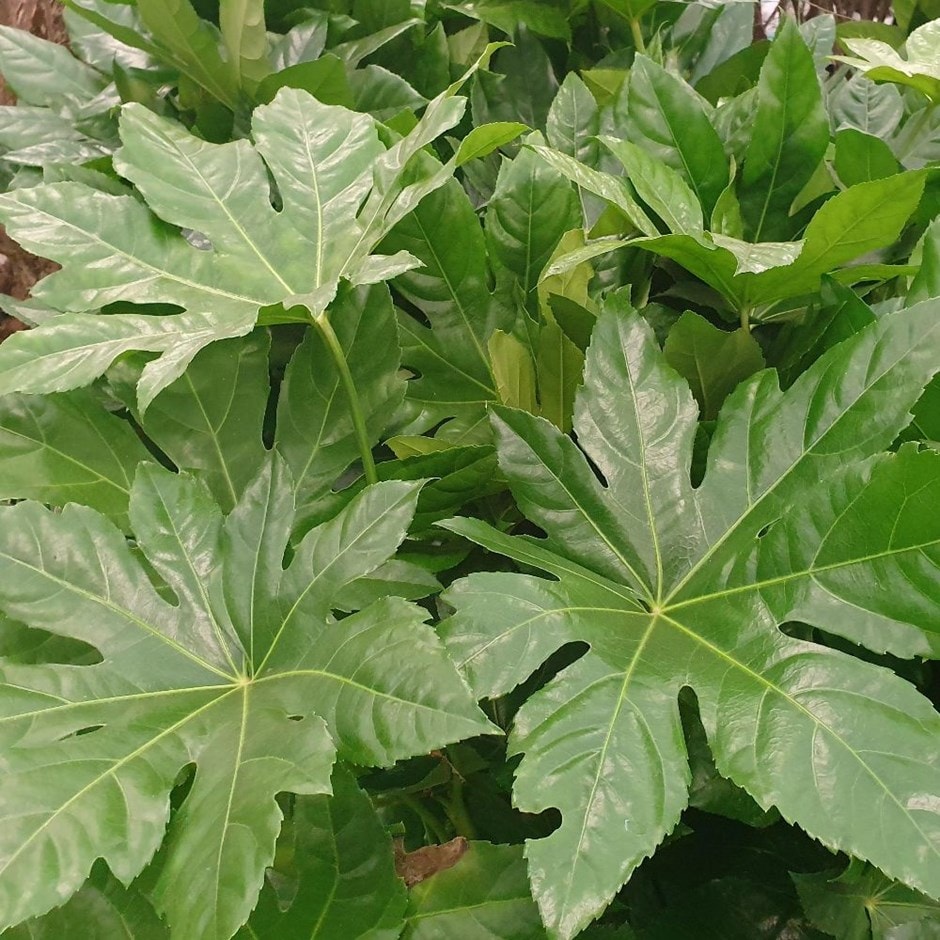
Buy Japanese aralia Fatsia japonica £16.99 Delivery by Crocus
Japanese Aralia at a Glance. A native of Japan and Korea, Japanese Arlia (Fatsia japonica) is known by many other names including paper plant, false castor oil, and spider's web among others. The mature shrub can reach 5 feet tall and the same in width. And with its fast growth rate of almost one foot a year, it won't take long to reach.

Buy Fatsia japonica 'Spider's Web' Reticulated Variegated Japanese Aralia Mr Maple │ Buy
Japanese aralia, also called the glossy-leaved paper plant, is a broadleaf evergreen shrub that adds a bold tropical feel to cool, shady landscapes.It makes an excellent foundation planting for trees or large shrubs. Its glossy, dark-green, hand-shape leaves—which can measure as large as 14 inches across—are particularly striking when illuminated with landscape lighting at night.
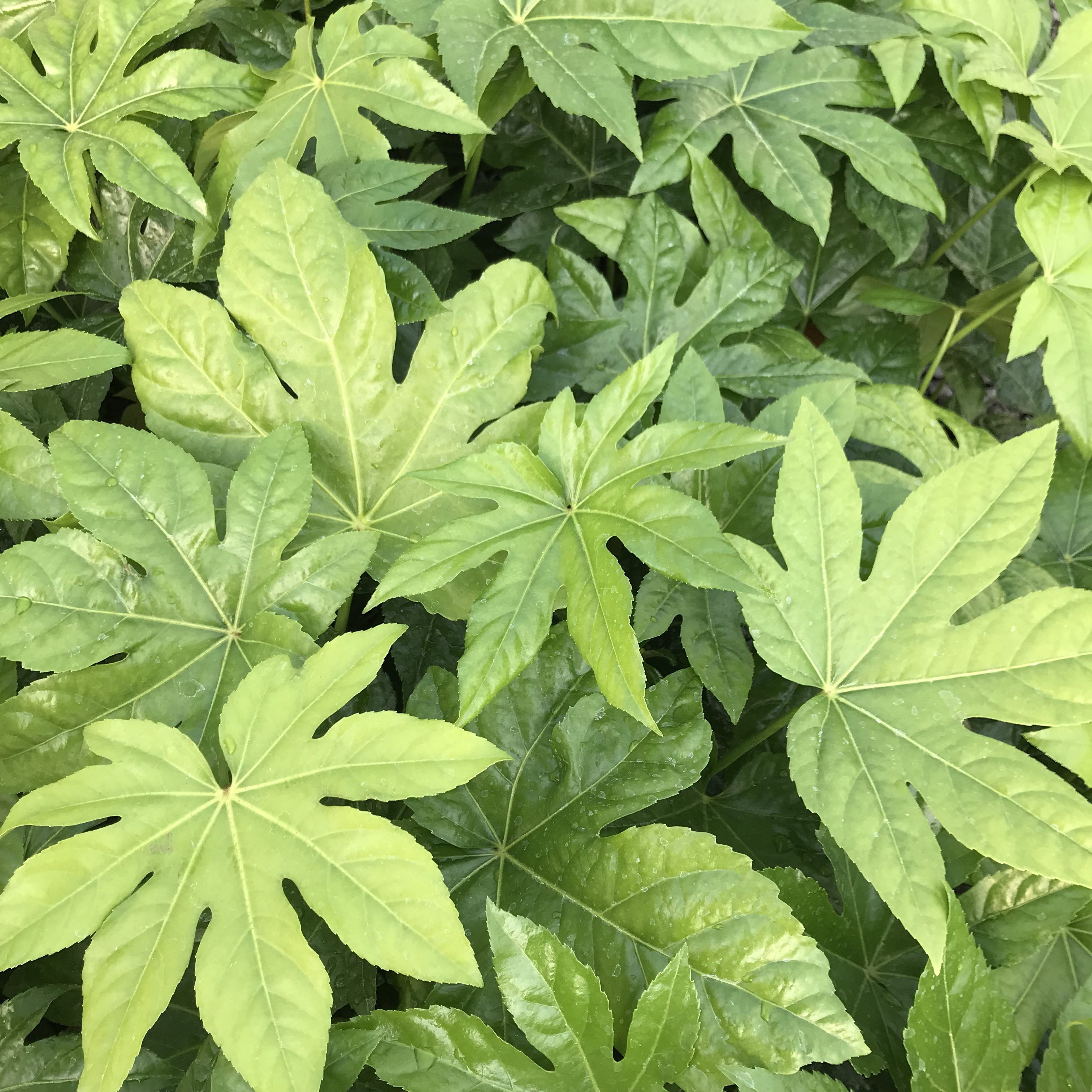
Fatsia japonica Japanese Aralia (4.5" Pot) Little Prince To Go
Fatsia japonica 'Spider's Web' (Japanese Aralia) is a bushy, evergreen shrub prized for its lush foliage of broad, palmate, dark-green leaves heavily-speckled with white. The variegation changes with the seasons and as the plant ages. In the fall, terminal clusters of white flowers are on display. They give way to ornamental, glossy, black berries.

How to Grow Japanese Aralia Fatsia Garden Chronicle
The Japanese aralia, or Fatsia, is a popular ornamental plant that can thrive in various soil conditions. To ensure healthy growth and development, consider your plant's soil requirements. Fatsia japonica prefers soil that drains well. It doesn't like sitting in waterlogged soil, which can lead to root rot.

Aralia, Japanese AustinTexas.gov
ornamental plant F. japonica 'Spider's Web' (or 'Spider White') is a rare variegated leaves. Slower growing than the original species, it reaches a lower maximum height of 2.5 m (8.2 ft) at maturity.
:max_bytes(150000):strip_icc()/fatsiajaponicakarariley-6-99b66e3c78044e6880c1f36d7ad9d16c.jpg)
Japanese Aralia (Fatsia Japonica) Indoor Plant Care & Growing Guide
Get to Know Japanese Aralia. Japanese aralia is a member of the Araliaceae family commonly grown outdoors in frost-free climates. Indoors, it can be kept small by regular pruning. Cut it back drastically in spring -- by half when necessary -- and pinch off growing tips to encourage branching. Fatsia japonica is a fast-growing, evergreen shrub.
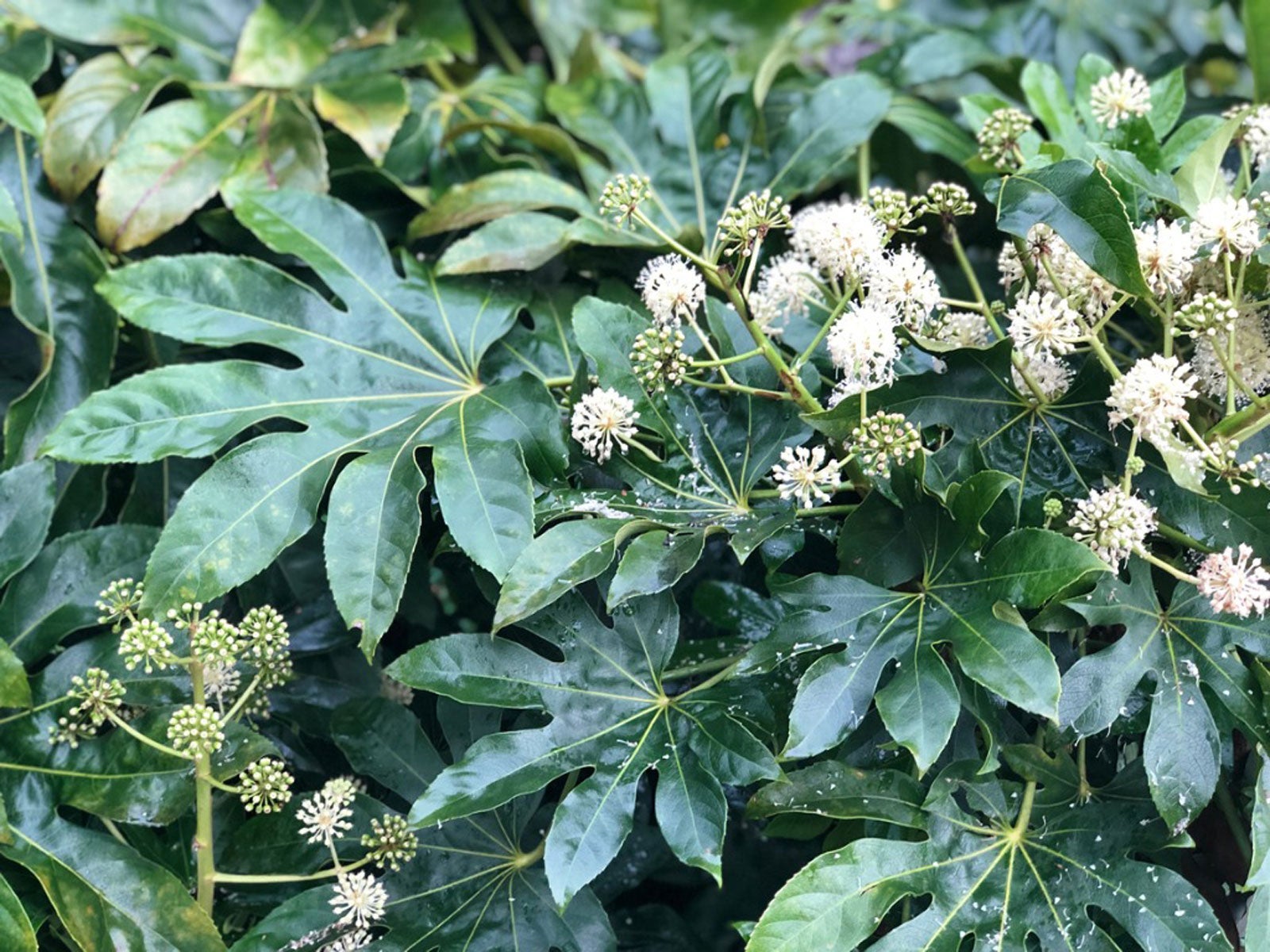
Fatsia Plant Info How To Grow And Care For Japanese Aralia Plant
Common Pests Japanese aralia is a popular houseplant native to the southern Japanese islands, Korea, and Taiwan, where it grows in subtropical conditions. A hardy, upright plant, Japanese aralia can grow up to 16 feet tall outdoors, and about six feet tall indoors, growing at a rate of 8-12 inches a year.